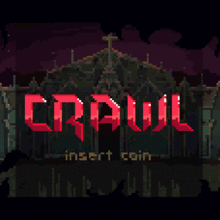Action RPG
The action role-playing game (abbreviated ARPG for A ction R ole P laying G ame ) is a sub-genre of computer role-playing games or action games in which elements that require quick reactions and good reflexes from the player (especially fights) are in the foreground. This type of gambling is in role-playing games in general Hack & Slay (English for hacking and slaughtering ) called this term is therefore sometimes ARPG genre used interchangeably for. Also common, but not applicable to all titles, is the term dungeon crawler , derived from the role-playing game term dungeon . There are early examples of this genre in both western and eastern role-playing games, so it is difficult to determine the origin.
main features
The assignment of action role-playing games and their representatives to role-playing games is sometimes controversial. Similar to classic role-playing games, the games often have an elaborate game world and a character system to expand the game character, but instead of solving puzzles, conversations and group dynamics, the focus is on learning and mastering the game system, the game basically runs in real time. The defining characteristic of action role-playing games is the element of action that the player must handle in order to be successful. There are fluid boundaries to the action-adventure genre, whose representatives often offer a similar feel to the game, but without developing the player's avatar.
Typical are among other things the control principle Click to walk (click on a point in the area, and the playing figure moves directly there) and Click to attack (click on a possible opponent, and the playing figure attacks it). There are also certain predefined actions such as magic or character skills, which can often be triggered via hotkeys . Modern games offer additional interaction with the environment (jumping, climbing, moving objects) or enhancements to the combat system. Typical are also a constant superiority of significantly weaker opponents and quite generically designed environments that are often reused.
However, there are also action elements that do not necessarily make the role-playing game an action role-playing game. This includes, among other things, real-time combat from the first person perspective , since the emphasis there is often more on the tactical aspect, or adventure elements in 3D role-playing games that are used to explore the environment. Games like Ultima Underworld or Gothic, for example, are considered controversial when it comes to the assignment to action role-playing games, because although they have clear characteristics with action-based game elements, this aspect is more in the background.
Avatar groups, single player and multiplayer modes
Often in such games a single character (" player character "; sometimes also referred to as an avatar ) is controlled. If there is a group of characters that you control, additional group members are often taken over by the computer, which guides them according to roughly adjustable rules of behavior. The control is normally carried out directly according to a point'n'click system, so that commands to the avatar are implemented immediately and have an effect in the game environment. The action elements rather than the role-playing elements in such games are critical to the success of the player. The role play character is often limited to a very vague background story, which is only continued on the side. Character development is also kept to a minimum, but often over-emphasizes the equipment component to provide a playful incentive and offers quick, frequent promotions to represent game progress.
Due to the fast and fluid course of the game, the action role-playing game is particularly suitable for multiplayer scenarios in which several players act cooperatively or competitively with each other (multiplayer mode). The isometric perspective of the games, which is often used, is also advantageous here, which enables the clear display of many figures at once without the player having to search for the optimal viewing angle.
Examples
- Baldur's Gate: Dark Alliance
- Borderlands
- Champions of Norrath
- Dark Souls
- Demon's Souls
- Diablo
- Dungeon Siege
- Gauntlet
- Grim Dawn
- Path of Exile
- Sacred
- Titan Quest
- Torchlight
- Fallout 4
literature
- Dobrovka et al. a .: Computer Games - Design and Programming , ISBN 978-3-8266-0920-6
Web links
- Overview of action role-playing games at MobyGames (English)
